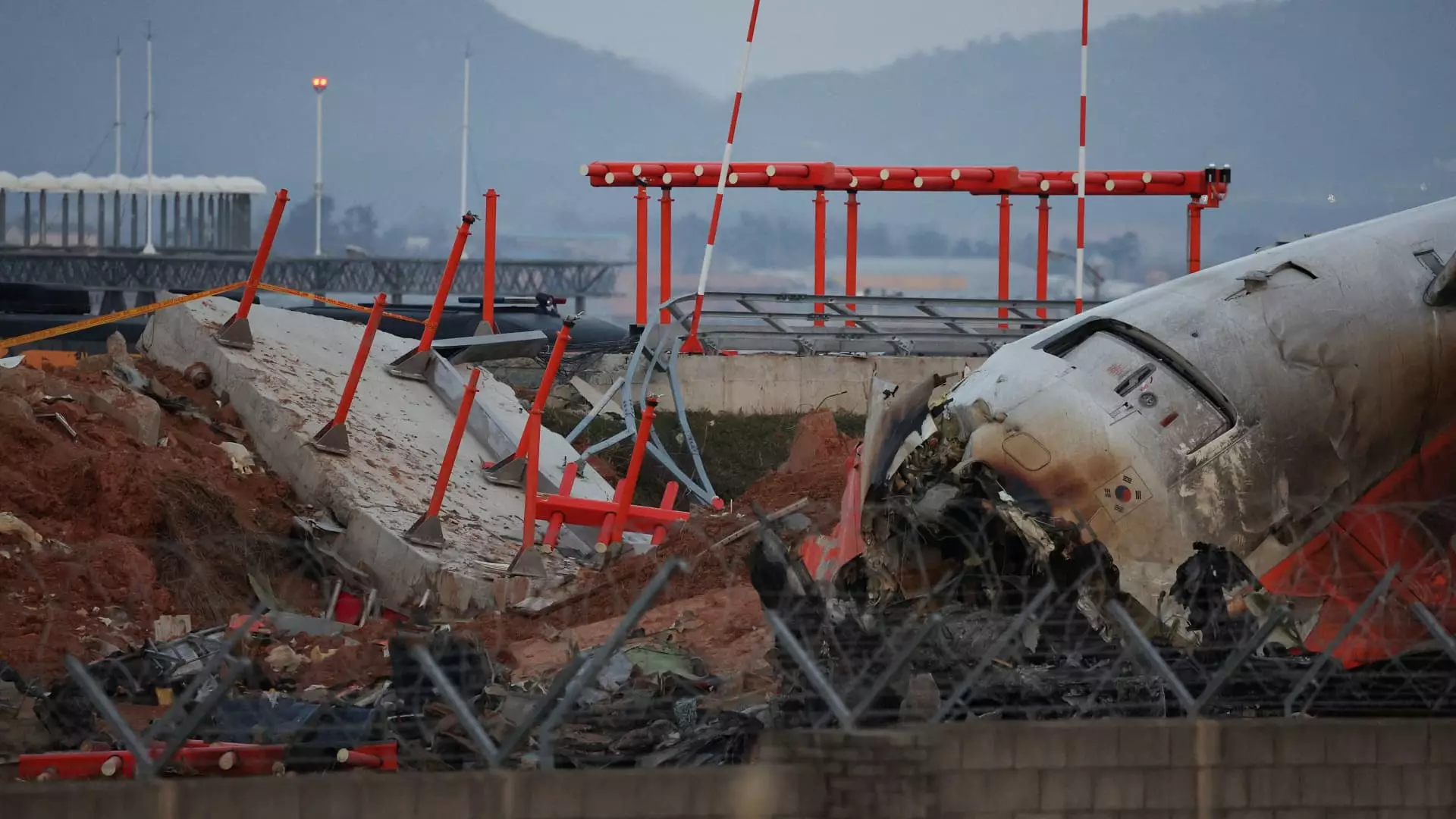The recent catastrophic crash of Jeju Air Flight 7C2216, which resulted in the tragic loss of 179 lives, has raised significant concerns regarding the preliminary findings related to the flight’s black boxes. Shockingly, both the flight data recorder and the cockpit voice recorder ceased their operations approximately four minutes before the devastating accident, as reported by South Korean authorities. This alarming detail has cast doubt on the reliability of the data that could have provided crucial insights into the crash and emphasized the need for a thorough investigation into the circumstances that led to the sudden stop in recording.
The black boxes are pivotal in aviation investigations as they capture essential communications between the flight crew and air traffic control, in addition to monitoring the aircraft’s performance metrics. Initial evaluations pointed to these devices as primary tools for unraveling the factors leading up to the disaster. Given that the crash occurred shortly after a reported bird strike, understanding the full context of the event during those last moments is vital. However, the inexplicable gap in data collection raises questions about what occurred in those final minutes, and whether a complete power failure may have contributed to this devastating incident.
Reactions and the Push for Transparency
The South Korean transport ministry has pledged to conduct a transparent investigation and ensure that all available data is utilized effectively. Yet, mixed reactions from victim families suggest deeper concerns about the integrity of the process. Some families assert that the probe should not solely be in the ministry’s hands and have made requests for the involvement of independent experts. This cry for a more comprehensive and unbiased investigation reflects a profound need for assurance that all aspects of the tragedy are scrutinized adequately.
Focus on Environmental Factors
In addition to the black box analysis, investigations are closely examining the crash site, particularly the embankment that the aircraft collided with. Designed to support a localizer system meant for guiding landings, this structure’s proximity to the runway raises questions about safety regulations and design standards. What oversight allowed such rigid material to be constructed so near the runway? Addressing potential safety hazards in airport infrastructure is just as crucial as evaluating the aircraft systems involved.
As this tragic event continues to unfold, its implications extend far beyond the immediate catastrophe. The aviation industry must use these findings as a catalyst for reform, enhancing safety measures and protocols. The examination of the Jeju Air crash offers an opportunity to address gaps in technology, oversight, and emergency preparedness. Ultimately, ensuring that such preventable tragedies do not happen again requires committed efforts from authorities, industry professionals, and the inclusion of voices from impacted families. The road to recovery and reform may be long, but it is a necessary journey driven by the necessity for accountability and enhanced safety in aviation.


Leave a Reply